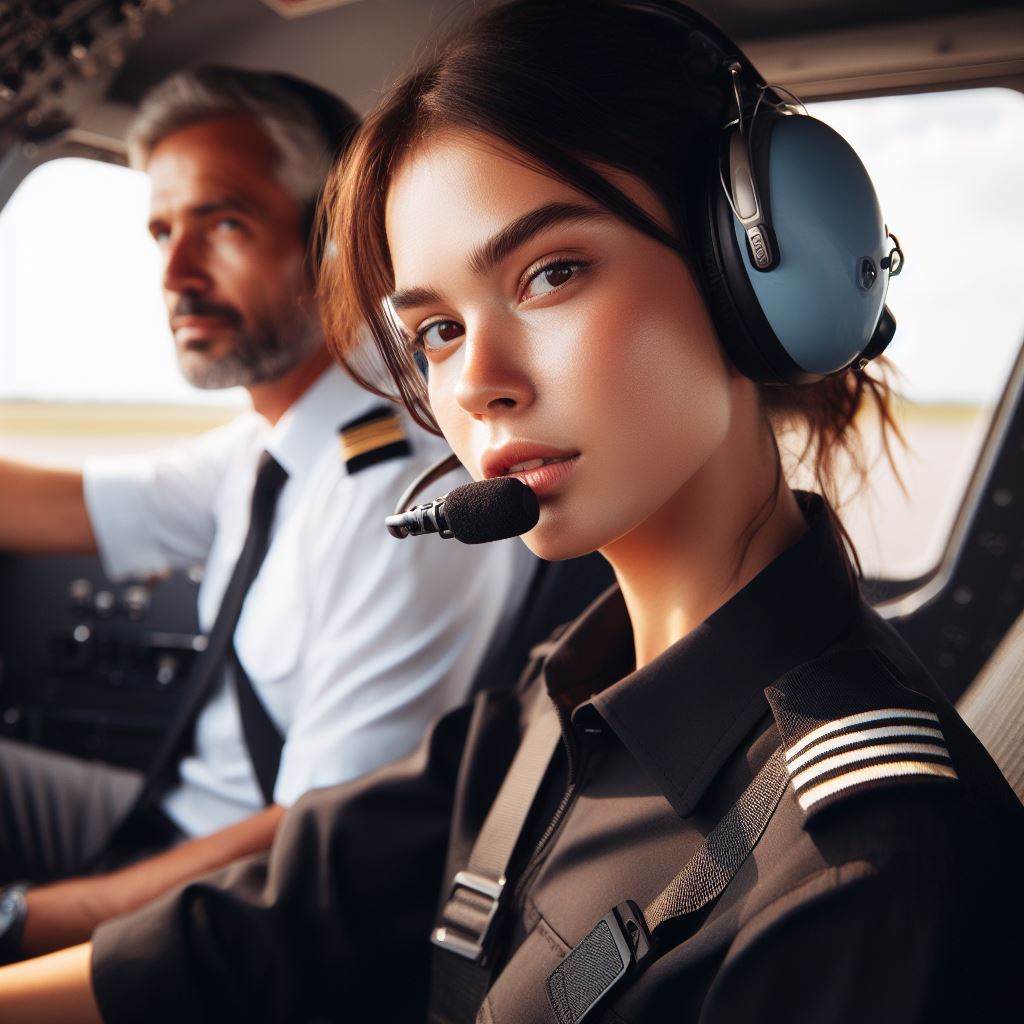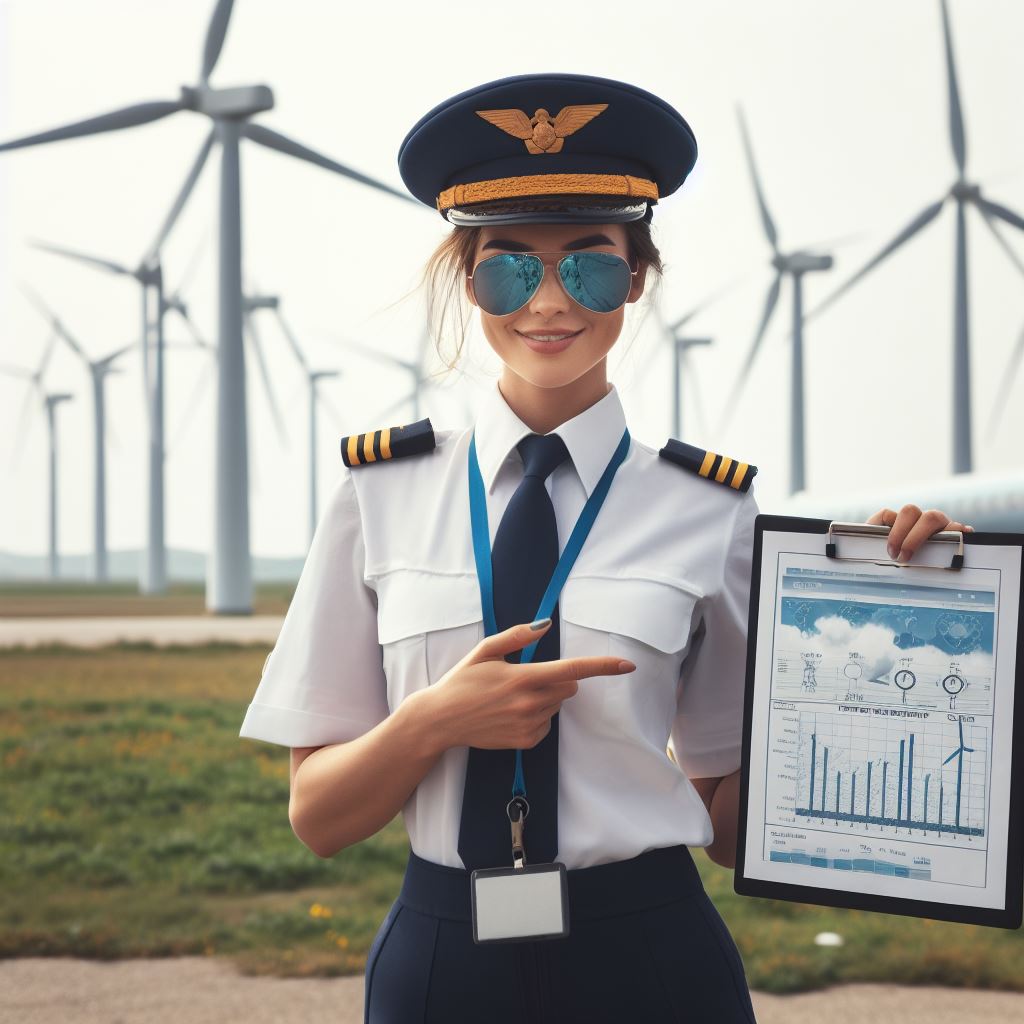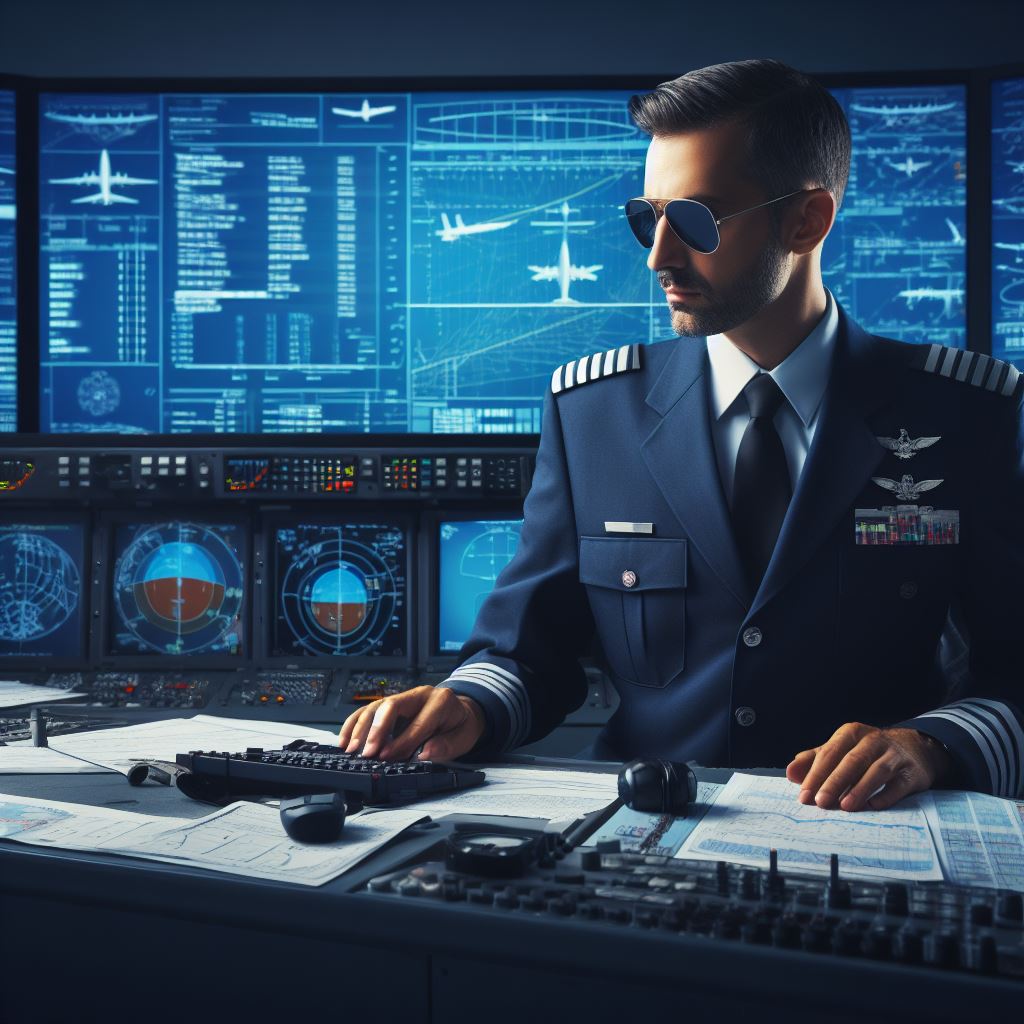Introduction
Pilot training programs in the US have evolved over time and have become crucial for the aviation industry.
The training programs have significantly transformed the way pilots are prepared for their roles.
Importance of Pilot Training Programs in the US
Pilot training programs play a vital role in ensuring the safety and efficiency of the aviation industry.
These programs equip aspiring pilots with the necessary skills and knowledge to navigate through various challenges in the sky.
The evolution of pilot training programs in the US has significantly transformed the aviation industry.
With the advancement of technology and changes in aviation regulations, pilot training programs have evolved to meet the industry’s ever-changing demands.
Previously, training focused primarily on technical skills, such as navigation and aircraft handling.
However, training programs now encompass a wide range of subjects, including human factors, decision-making, and crew resource management.
Furthermore, the introduction of simulation technology has revolutionized pilot training.
Simulators accurately mimic real-flight scenarios, allowing pilots to practice in a safe and controlled environment.
This enables them to effectively handle emergency situations and enhances their decision-making abilities.
Pilot training programs also emphasize the importance of situational awareness.
Pilots are trained to analyze and interpret data from various sources, including weather reports, navigation systems, and air traffic control.
This knowledge equips them to make informed decisions and adapt to changing conditions during flights.
Moreover, the evolution of pilot training programs has resulted in a shift towards competency-based training.
This approach focuses on enhancing pilots’ practical skills and abilities rather than solely relying on theoretical knowledge.
As a result, pilots are better prepared to handle real-world scenarios, ensuring the safety of passengers and aircraft.
Basically, the evolution of pilot training programs in the US has significantly transformed the aviation industry.
These programs have adapted to technological advancements and changing regulations, ensuring that pilots are well-equipped to handle the challenges of modern aviation.
By focusing on practical skills, decision-making, and situational awareness, pilot training programs play a crucial role in maintaining the safety and efficiency of the aviation industry.
Early Years of Pilot Training Programs
In the early 20th century, the establishment of the first flight schools marked the beginning of pilot training programs in the US.
Transform Your Career Today
Unlock a personalized career strategy that drives real results. Get tailored advice and a roadmap designed just for you.
Start NowThese programs had limited resources and curriculum due to the nascent nature of aviation education.
Establishment of the first flight schools in the early 20th century
As aviation gained popularity, the need for formal pilot training programs arose.
Flight schools like the Wright Flying School in Ohio and the Curtiss Flying School in New York were among the pioneers in this regard.
Limited resources and curriculum
Due to the infancy of aviation, resources for pilot training were scarce.
Flight simulators and other training aids were yet to be developed, making the learning process challenging.
Emphasis on hands-on experience and flying hours
In the early years of pilot training, hands-on experience and accumulating flying hours were prioritized.
This practical approach aimed to develop the necessary skills and confidence for aviation enthusiasts to become proficient pilots.
Role of military aviation in pilot training during World War I and World War II
The outbreak of World War I led to a rapid expansion of pilot training programs.
The military played a crucial role in training pilots to meet the growing demands of aerial warfare. This trend continued during World War II, further revolutionizing pilot training.
This early period was characterized by the establishment of flight schools, the scarcity of resources, and a strong emphasis on hands-on experience.
Additionally, the involvement of the military during the World Wars significantly influenced the development of pilot training programs in the US.
Post-War Developments
Introduction of formal training programs by airlines
- Airlines recognized the need for structured training programs post-war.
- Formal programs were established to ensure pilots were properly trained.
- These programs focused on the development of essential skills and knowledge.
- Airlines took responsibility for training their pilots to meet industry standards.
- Formal programs improved overall pilot competency and safety standards.
Integration of technological advancements in training
- Technological advancements played a crucial role in pilot training progression.
- Airlines incorporated advanced flight simulators to enhance training realism.
- Simulators provided a safe environment to practice various flight scenarios.
- Training with simulators helped pilots develop critical decision-making skills.
- Technology integration enhanced training efficiency and reduced costs.
Adoption of standardized procedures and regulations
- The adoption of standardized procedures and regulations was a significant milestone.
- Uniform training protocols ensured consistency across different training programs.
- Standardized procedures improved pilot communication and collaboration.
- Regulations established safety guidelines and requirements for pilot training.
- Adoption of standards and regulations enhanced overall training effectiveness.
Emergence of flight simulators and their impact on training efficiency
- The emergence of flight simulators revolutionized pilot training methods.
- Simulators replicated real-life flight scenarios and provided hands-on training.
- Pilots could practice emergency situations in a controlled and safe environment.
- Simulators allowed for repetitive training, improving muscle memory and response times.
- Flight simulators significantly increased training efficiency and reduced costs.
In essence, the post-war era saw significant advancements in pilot training programs in the United States.
Airlines recognized the need for formal training programs and took responsibility for training their pilots.
Integration of technological advancements, such as flight simulators, played a crucial role in enhancing training realism and efficiency.
The adoption of standardized procedures and regulations further improved training effectiveness.
Overall, these developments have contributed to the competence and safety standards of pilots in the US aviation industry.
Shift towards Professionalism
Introduction of the Airline Deregulation Act in 1978
The Airline Deregulation Act of 1978 marked a significant shift in the pilot training programs in the US.
This legislation removed government control over fares, routes, and market entry for airlines.
As a result, the industry became more competitive, leading to a greater demand for highly skilled pilots.
Increased competition among airlines and demand for skilled pilots
The deregulation of the airline industry created a healthy competition among airlines.
Transform Your Career Today
Unlock a personalized career strategy that drives real results. Get tailored advice and a roadmap designed just for you.
Start NowAirlines were looking for ways to differentiate themselves and provide better services to attract more customers.
This increased the demand for well-trained and competent pilots who could ensure safe and efficient operations.
Focus on academic education and knowledge-based training
Pilot training programs began to put a greater emphasis on academic education and knowledge-based training.
Flight schools and universities collaborated to develop comprehensive curricula that included theoretical and technical training.
Pilots were expected to have a thorough understanding of aerodynamics, navigation, meteorology, and other relevant subjects.
Partnership between airlines and universities to offer comprehensive programs
Airlines recognized the importance of nurturing their own pool of talented pilots.
They started partnering with universities to offer comprehensive pilot training programs.
These programs often included flight training, academic courses, and internships with the airlines for hands-on experience.
In conclusion, the evolution of pilot training programs in the US saw a shift towards professionalism.
The introduction of the Airline Deregulation Act in 1978 and increased competition among airlines played a significant role in this transformation.
Pilot training programs began focusing more on academic education and knowledge-based training.
Airlines and universities formed partnerships to offer comprehensive programs that prepared pilots for the demanding challenges of the aviation industry.
These changes have helped ensure that pilots receive the necessary training and skills to meet the evolving needs of the modern aviation industry.
Read: Essential Skills Every Pilot Needs to Succeed

Current Trends in Pilot Training
Incorporation of simulation-based training methods
Simulation-based training has revolutionized pilot training programs in the US.
By utilizing sophisticated simulators, aspiring pilots can practice realistic flight scenarios without any risk.
This method allows trainees to gain valuable experience and develop essential skills in a controlled environment.
Simulators recreate various flight conditions, including adverse weather, equipment malfunctions, and emergencies.
Pilots can learn how to handle these situations effectively, enhancing their decision-making abilities and problem-solving skills.
This approach reduces the reliance on actual aircraft for training purposes, resulting in cost savings and increased efficiency.
Transform Your Career Today
Unlock a personalized career strategy that drives real results. Get tailored advice and a roadmap designed just for you.
Start NowEmphasis on multi-crew cooperation and crew resource management
In recent years, there has been a significant emphasis on multi-crew cooperation and crew resource management during pilot training.
This focus recognizes the importance of effective teamwork and communication within the cockpit.
Pilots must work seamlessly as a team, coordinating their actions and sharing responsibilities.
Training programs now include group exercises, where pilots practice collaborating, making joint decisions, and managing shared resources.
These activities simulate realistic scenarios and prepare pilots for the challenges they may face in a real flight setting.
Integration of automation and advanced avionics in training programs
With the continuous advancement in aviation technology, pilot training programs now integrate automation and advanced avionics.
Pilots must develop proficiency in operating complex systems, such as fly-by-wire controls, autopilot systems, and digital displays.
By incorporating these technologies into training, pilots become familiar with the latest advancements in aircraft systems.
They learn how to effectively use automation to enhance flight safety and efficiency.
The training also includes scenarios where pilots must troubleshoot system failures and make appropriate manual interventions.
Growing importance of diversity and inclusivity in pilot training
Diversity and inclusivity have become crucial considerations in pilot training programs.
The aviation industry recognizes the need to encourage individuals from diverse backgrounds to pursue careers in aviation.
Training programs now focus on creating an inclusive environment that promotes equal opportunities for aspiring pilots.
Efforts are made to address gender and racial disparities by providing scholarships and mentorship programs.
Additionally, training programs incorporate cultural sensitivity training to ensure pilots can effectively interact with passengers from different backgrounds.
These initiatives aim to increase diversity in the pilot workforce and create a more inclusive aviation industry.
Overall, pilot training programs in the US have evolved to incorporate simulation-based training methods, emphasize multi-crew cooperation and crew resource management, integrate automation and advanced avionics, and prioritize diversity and inclusivity.
These current trends reflect the continuous efforts to enhance the effectiveness and efficiency of pilot training programs, ensuring that aspiring pilots are equipped with the necessary skills and knowledge to navigate the evolving aviation landscape.
Read: Common Misconceptions About Pilots Debunked!
Challenges Faced by Pilot Training Programs
Shortage of qualified flight instructors
- Flight schools struggling to find enough experienced instructors to meet demand.
- Lack of instructors leads to longer wait times for students and delays in training.
- Shortage affects the overall efficiency and effectiveness of pilot training programs.
- Solutions include offering incentives to attract more instructors and providing mentorship programs.
Rising costs of training and tuition fees
- Increasing costs of aircraft maintenance, fuel, and insurance impact training expenses.
- Tuition fees have also been rising due to inflation and the need for advanced equipment.
- Financial burden makes it difficult for aspiring pilots to afford training programs.
- Possible solutions include seeking financial aid options and scholarships for students.
Keeping up with technological advancements
- Advancements in aviation technology require regular updates to training programs.
- Flight simulators and other training aids need to be continually updated and maintained.
- Ensuring instructors are knowledgeable and skilled in using new technologies.
- Failure to keep up with advancements can result in outdated training methods.
Ensuring quality and consistency across training programs
- Variances in training programs can affect the outcome and competence of pilots.
- Standardization of curriculum and assessments is necessary for consistent training.
- Regulatory bodies play a vital role in monitoring and improving training standards.
- Collaboration between industry stakeholders is essential to establish best practices.
In fact, pilot training programs in the US face several challenges that impact their efficiency and effectiveness.
Transform Your Career Today
Unlock a personalized career strategy that drives real results. Get tailored advice and a roadmap designed just for you.
Start NowThe shortage of qualified flight instructors leads to delays and inefficiencies in training.
Rising costs of training and tuition fees make it difficult for aspiring pilots to afford quality education.
Keeping up with technological advancements is crucial to ensure pilots are equipped with the latest skills.
Additionally, maintaining quality and consistency across training programs is essential for producing competent pilots.
To overcome these challenges, the industry must focus on attracting more instructors, providing financial support to students, embracing technological advancements, and standardizing training practices.
Read: Exploring Different Flying Careers: Beyond Airlines
Future Outlook for Pilot Training Programs
Anticipated developments in aviation technology and training methods
- Advanced flight simulators will continue to play a crucial role in pilot training.
- Virtual reality (VR) and augmented reality (AR) will be integrated into training programs.
- Artificial intelligence will assist in analyzing data and improving safety measures.
- Drone technology will require specialized training programs for pilots.
Increasing focus on competency-based training and assessment
- Training programs will shift from traditional hour-based requirements to competency-based assessments.
- Emphasis will be placed on practical applications and real-world simulations.
- Continuous assessment and feedback will be integral for skill development and improvement.
Efforts to enhance diversity and inclusion in pilot training
- Initiatives will be launched to increase the representation of women and minority groups in pilot training programs.
- Scholarships and mentorship programs will be provided to underrepresented communities.
- Cultural competency training will be integrated to promote a more inclusive and diverse cockpit environment.
Addressing challenges to ensure a steady supply of skilled pilots
- The aviation industry will collaborate closely with educational institutions to attract and retain talent.
- Streamlined pathways and financial assistance will be introduced to make pilot training more accessible.
- Partnerships with airlines and other stakeholders will provide job security and career progression opportunities.
- Retention strategies, such as improved work-life balance and pilot wellness programs, will be implemented.
In general, the future of pilot training programs in the US looks promising with anticipated developments in aviation technology, competency-based training approaches, and efforts to enhance diversity and inclusion.
Addressing the challenges related to the supply of skilled pilots will ensure a sustainable pipeline for the aviation industry.
With these ongoing advancements, the US can continue to produce highly competent and diverse pilots who will contribute to the safe and efficient operation of the nation’s airspace.
Read: Challenges and Rewards of Being a Female Pilot in the US
Conclusion
The evolution of pilot training programs in the US has been a fascinating journey.
We have seen how these programs have adapted to the ever-changing aviation industry, constantly incorporating new technologies and best practices.
This adaptability and innovation are crucial for ensuring the safety and efficiency of our aviation system.
The importance of continued development and adaptation in pilot training cannot be overstated.
As the aviation industry continues to grow and evolve, so too must our training programs to meet the demands of the future.
The future looks bright, with a new generation of well-equipped and capable pilots ready to take on the challenges ahead.
With advancements in technology, such as virtual reality and artificial intelligence, the possibilities for pilot training are endless.
We can look forward to a future where pilots are trained in realistic and immersive environments, preparing them for any situation they may encounter.
By embracing these changes and continuing to invest in pilot training programs, we can ensure the ongoing success and safety of the aviation industry.
So let us celebrate the progress made in pilot training, while also looking ahead with optimism and excitement for what the future holds.
Transform Your Career Today
Unlock a personalized career strategy that drives real results. Get tailored advice and a roadmap designed just for you.
Start NowTogether, we can build a brighter future for aviation, one that is safer, more efficient, and filled with highly skilled pilots who are ready to soar to new heights.




